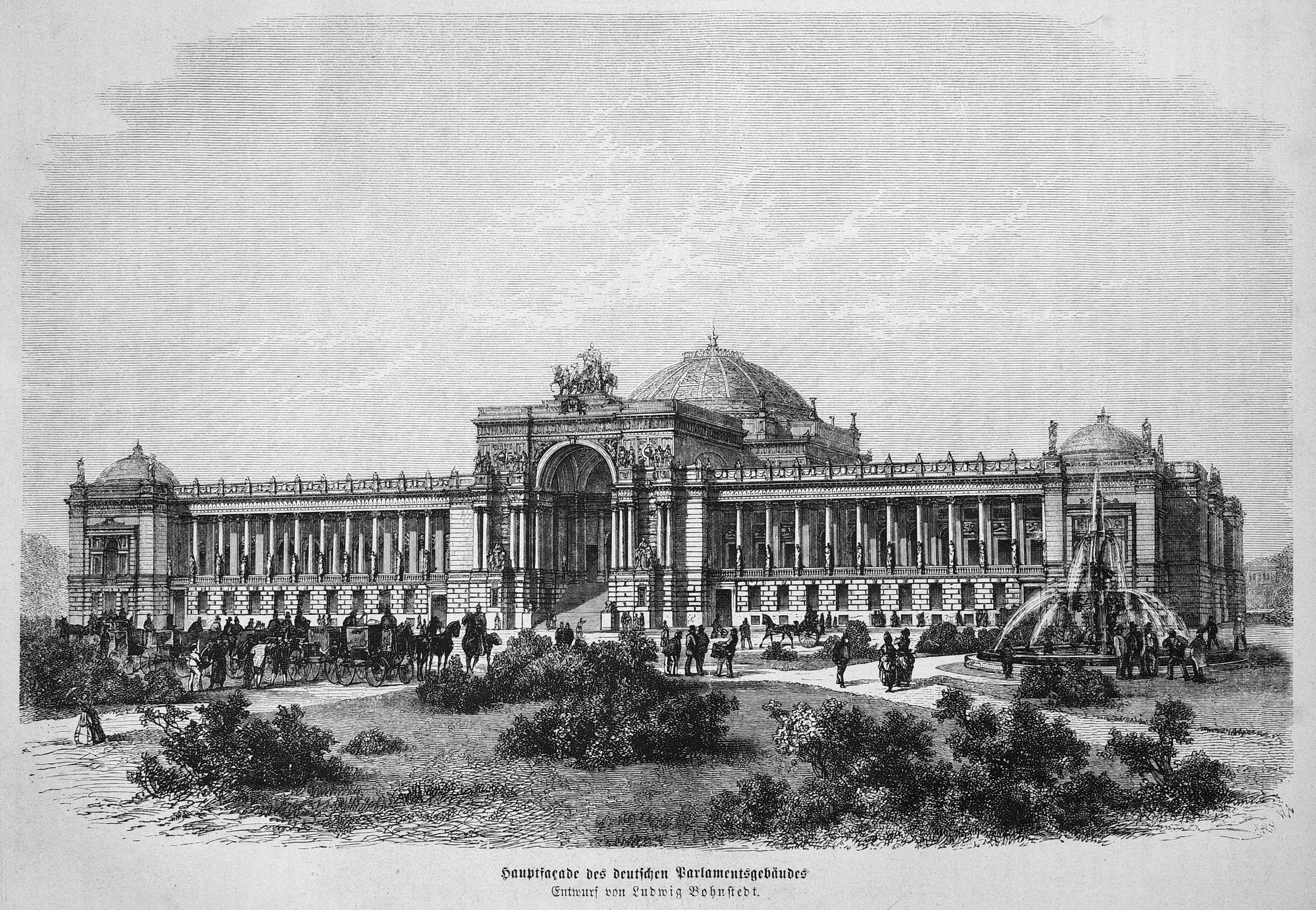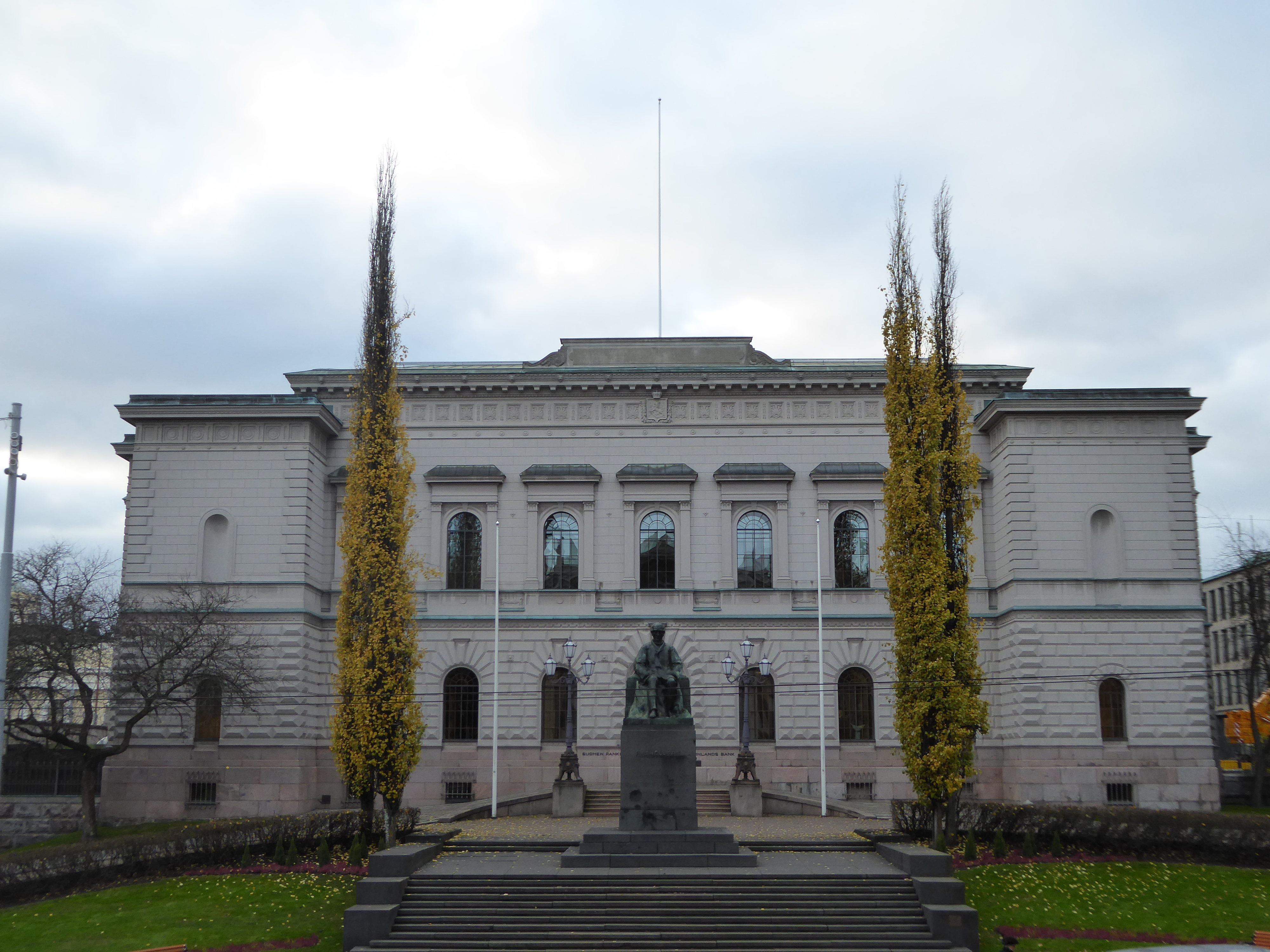Ludwig Bohnstedt on:
[Wikipedia]
[Google]
[Amazon]
 Franz Ludwig Carl Bohnstedt (27 October 1822, Saint Petersburg - 3 January 1885,
Franz Ludwig Carl Bohnstedt (27 October 1822, Saint Petersburg - 3 January 1885,
 In the late 1840s, he was appointed a Court Architect; helping to restore Royal properties on the Kamenny Islands, and at Oranienbaum. In 1850, he married Olga van der Vliet (1833–1906). They had five children, including Ernst (1851–1908), a manufacturing director, Alfred (1854–1906), who also became an architect, and Ida (1858-1916), a painter. From 1851 to 1854, he was the Russian government's Chief Architect. After 1858, he was a Councilor and Professor at the Imperial Academy. During this time, he entered numerous design competitions, mostly in Germany, but also in England, Spain and Italy.
This focus on Germany, as well as health considerations, led him to
In the late 1840s, he was appointed a Court Architect; helping to restore Royal properties on the Kamenny Islands, and at Oranienbaum. In 1850, he married Olga van der Vliet (1833–1906). They had five children, including Ernst (1851–1908), a manufacturing director, Alfred (1854–1906), who also became an architect, and Ida (1858-1916), a painter. From 1851 to 1854, he was the Russian government's Chief Architect. After 1858, he was a Councilor and Professor at the Imperial Academy. During this time, he entered numerous design competitions, mostly in Germany, but also in England, Spain and Italy.
This focus on Germany, as well as health considerations, led him to 
online
* "Ludwig Bohnstedt" (obituary), In: ''
online
* * Dieter Dolgner: ''Architektur im 19. Jahrhundert. Ludwig Bohnstedt, Leben und Werk'', Hermann Bohlaus Nachfolger, Weimar, 1979
@ Park Hohenrode-Nordhausen
@ the City of Gotha website {{DEFAULTSORT:Bohnstedt, Ludwig 1822 births 1885 deaths 19th-century German architects 19th-century architects from the Russian Empire Baltic German people from the Russian Empire Prussian Academy of Arts alumni Architects from Saint Petersburg
 Franz Ludwig Carl Bohnstedt (27 October 1822, Saint Petersburg - 3 January 1885,
Franz Ludwig Carl Bohnstedt (27 October 1822, Saint Petersburg - 3 January 1885, Gotha
Gotha () is the fifth-largest city in Thuringia, Germany, west of Erfurt and east of Eisenach with a population of 44,000. The city is the capital of the district of Gotha and was also a residence of the Ernestine Wettins from 1640 until the ...
) was a Baltic-German
Baltic Germans (german: Deutsch-Balten or , later ) were ethnic German inhabitants of the eastern shores of the Baltic Sea, in what today are Estonia and Latvia. Since their coerced resettlement in 1939, Baltic Germans have markedly declined ...
architect, who spent much of his career in Thuringia.
Life and work
He was born in Russia, to German immigrants, and began his education at Saint Peter's School. In 1839, at the age of seventeen, he enrolled at theUniversity of Berlin
Humboldt-Universität zu Berlin (german: Humboldt-Universität zu Berlin, abbreviated HU Berlin) is a German public research university in the central borough of Mitte in Berlin. It was established by Frederick William III on the initiative o ...
, where he studied philosophy, but soon withdrew in favor of studying architecture at the Prussian Academy of Arts, with Heinrich Strack. He returned to Saint Petersburg in 1843, and found a position in the studios of . While there, he audited classes at the Imperial Academy of Arts and was named a "free artist".
 In the late 1840s, he was appointed a Court Architect; helping to restore Royal properties on the Kamenny Islands, and at Oranienbaum. In 1850, he married Olga van der Vliet (1833–1906). They had five children, including Ernst (1851–1908), a manufacturing director, Alfred (1854–1906), who also became an architect, and Ida (1858-1916), a painter. From 1851 to 1854, he was the Russian government's Chief Architect. After 1858, he was a Councilor and Professor at the Imperial Academy. During this time, he entered numerous design competitions, mostly in Germany, but also in England, Spain and Italy.
This focus on Germany, as well as health considerations, led him to
In the late 1840s, he was appointed a Court Architect; helping to restore Royal properties on the Kamenny Islands, and at Oranienbaum. In 1850, he married Olga van der Vliet (1833–1906). They had five children, including Ernst (1851–1908), a manufacturing director, Alfred (1854–1906), who also became an architect, and Ida (1858-1916), a painter. From 1851 to 1854, he was the Russian government's Chief Architect. After 1858, he was a Councilor and Professor at the Imperial Academy. During this time, he entered numerous design competitions, mostly in Germany, but also in England, Spain and Italy.
This focus on Germany, as well as health considerations, led him to Saxe-Coburg-Gotha
Saxe-Coburg and Gotha (german: Sachsen-Coburg und Gotha), or Saxe-Coburg-Gotha (german: Sachsen-Coburg-Gotha, links=no ), was an Ernestine, Thuringian duchy ruled by a branch of the House of Wettin, consisting of territories in the present- ...
, where he and his family settled in 1862, and he worked as an official architect for the city of Gotha. He served as an honorary "Senator" for building construction there, from 1866 to 1871.
The following year, he entered what would become his most important competition; designing a new building for the Reichstag, in Berlin. Over one-hundred architects submitted entries. His design was awarded first prize. Due to unresolved political and financial issues, construction was postponed indefinitely. Some of those involved may have been uncomfortable with his foreign origin.Helmut Roob and Günter Scheffler: ''Gothaer Persönlichkeiten'', 2nd ed., Rhino-Verlag, 2006, pg.23 In any event, he put the matter out of his mind and went on to other competitions; winning one for the new headquarters of the Bank of Finland
The Bank of Finland ( fi, Suomen Pankki, sv, Finlands Bank) is the central bank of Finland. It views itself as the fourth oldest surviving central bank in the world, after Sweden's Riksbank, the Bank of England, and the Bank of France.
History
...
in 1876. In the meantime, he also became a member of the Prussian Academy (1874), and an honorary member of the Amsterdam Building Academy (1875).
Then, in 1881, the Reichstag project was revived but, instead of using his design, a new competition was announced. His attempts to reverse this decision were to no avail. Many of his colleagues failed to support him, saying that his nearly ten-year-old designs were now obsolete. He reluctantly submitted a reworking of his plans. They received little attention and, in 1882, the contract went to Paul Wallot
Johann Paul Wallot (26 June 1841 Oppenheim am Rhein – 10 August 1912 Bad Schwalbach) was a German architect of Huguenot descent, best known for designing the Reichstag building in Berlin, erected between 1884 and 1894. He also built the adjacen ...
, an architect from Frankfurt. In 1883, he became ill and suffered a stroke that left him unable to work. He lingered until January, 1885.

References
Further reading
* "Ludwig Bohnstedt" (obituary), In: ', 1885, #2, pg.15online
* "Ludwig Bohnstedt" (obituary), In: ''
Deutsche Bauzeitung
''Deutsche Bauzeitung'' (stylized as ''db deutsche bauzeitung'') is the oldest technical architecture publication periodical in Germany. The magazine was established in 1867. Its headquarters is in Leinfelden-Echterdingen. The publisher is Konr ...
'', 1885, #19online
* * Dieter Dolgner: ''Architektur im 19. Jahrhundert. Ludwig Bohnstedt, Leben und Werk'', Hermann Bohlaus Nachfolger, Weimar, 1979
External links
*@ Park Hohenrode-Nordhausen
@ the City of Gotha website {{DEFAULTSORT:Bohnstedt, Ludwig 1822 births 1885 deaths 19th-century German architects 19th-century architects from the Russian Empire Baltic German people from the Russian Empire Prussian Academy of Arts alumni Architects from Saint Petersburg